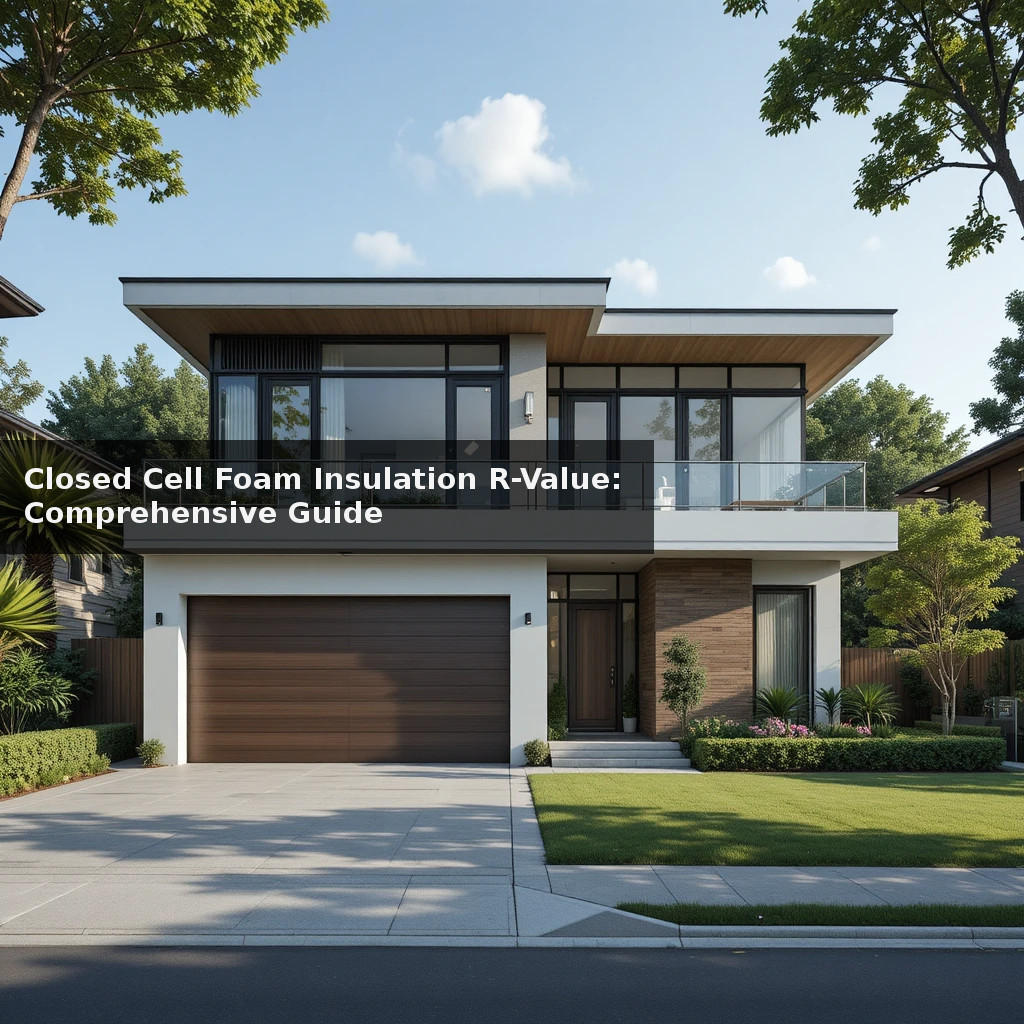
Closed Cell Foam Insulation R-Value: Comprehensive Guide
Closed cell foam insulation R-value is a critical measure for evaluating its performance in energy-efficient building design. Insulation reduces heat transfer, lowering energy costs and ensuring compliance with building codes. Unlike open-cell foam, which is less dense and more permeable, closed cell foam features a compact, airtight structure that excels in thermal resistance and air sealing. This guide explores the R-value, benefits, applications, and limitations of closed cell foam insulation, optimized for the keyword closed cell foam insulation R-value to help you choose the best insulation for your needs.
What Is Closed Cell Foam Insulation R-Value?
The R-value of closed cell foam insulation quantifies its ability to resist heat flow, a key factor in insulation effectiveness. Expressed per inch of thickness, R-value indicates thermal resistance—higher values mean better insulation. For example, an R-6 material outperforms an R-3 material in blocking heat. Laboratory R-values may differ from real-world performance due to installation quality, temperature variations, and surface adhesion. Professional application is vital to maximize the thermal efficiency of closed cell foam insulation.
Typical R-Value of Closed Cell Foam Insulation
Closed cell foam insulation typically achieves an R-value of R-6 to R-7.5 per inch, outperforming open-cell foam (R-3.5 to R-3.8 per inch) and traditional materials like fiberglass (R-3.1 to R-4.3) or cellulose (R-3.6 to R-3.8). Its high R-value stems from a dense structure and gas-filled cells that effectively trap heat. Factors such as curing time, application temperature, material density, and substrate condition can influence performance. Proper installation ensures the full thermal potential of closed cell foam insulation is realized.
Performance Characteristics
The high R-value of closed cell foam insulation ensures superior thermal efficiency, making it ideal for both cold and hot climates. It minimizes heat transfer, maintaining consistent indoor temperatures year-round. The closed-cell structure provides excellent moisture resistance, preventing water and vapor penetration that could lead to mold or structural damage. Its strong expansion creates an airtight seal, eliminating drafts and air leaks. Additionally, it adds structural rigidity to walls and roofs, enhancing building stability without requiring extra reinforcement.
Energy and Economic Benefits
Closed cell foam insulation can reduce energy consumption by up to 50%, significantly lowering heating and cooling costs. Its durability ensures long-term savings, making it a cost-effective investment over time. Many regions offer energy efficiency incentives, tax credits, or rebates for its installation, further reducing costs. By leveraging the high R-value of closed cell foam insulation, homeowners and businesses can achieve substantial economic benefits while improving building performance.
Application and Installation
The high R-value of closed cell foam insulation makes it versatile for walls, attics, roofs, crawl spaces, foundations, and under slabs. Professional spraying at 60–90°F ensures optimal expansion and adhesion. Thorough surface preparation—removing dust, debris, or moisture—is critical for maximum performance. Applying layers thicker than 4 inches often yields diminishing returns, increasing costs without proportional benefits. Skilled installers are essential to achieve an airtight, high-performance insulation layer.
Durability and Lifespan
Closed cell foam insulation maintains its R-value for decades due to its robust composition. Unlike fiberglass or cellulose, which may settle or degrade, it resists pests, mold, and environmental wear, requiring minimal maintenance. Its long lifespan ensures consistent performance, making it a reliable choice for residential and commercial buildings seeking sustained energy efficiency.
Environmental Considerations
Closed cell foam insulation supports sustainability by reducing energy demand and carbon footprints. Modern formulations use low Global Warming Potential (GWP) blowing agents, minimizing environmental impact. While end-of-life recyclability remains challenging, the energy savings from its high R-value contribute to eco-friendly building practices. This makes it a preferred choice for green construction projects aiming for long-term sustainability.
Limitations and Cost Considerations
Closed cell foam insulation has a higher upfront cost than fiberglass or cellulose due to specialized materials and professional installation. It’s less suitable for applications requiring vapor permeability, as its impermeable structure may trap moisture in certain scenarios. Retrofitting can be difficult due to space or surface constraints. Installation errors, such as uneven application, can reduce efficiency, emphasizing the need for experienced installers to ensure optimal performance.
The closed cell foam insulation R-value, ranging from R-6 to R-7 per inch, offers unmatched thermal performance, moisture resistance, and air-sealing capabilities. Its durability and energy-saving potential make it ideal for modern construction and retrofitting. While initial costs are higher, long-term savings and potential incentives justify the investment. For those prioritizing energy efficiency in 2025, closed cell foam insulation delivers superior performance and value.